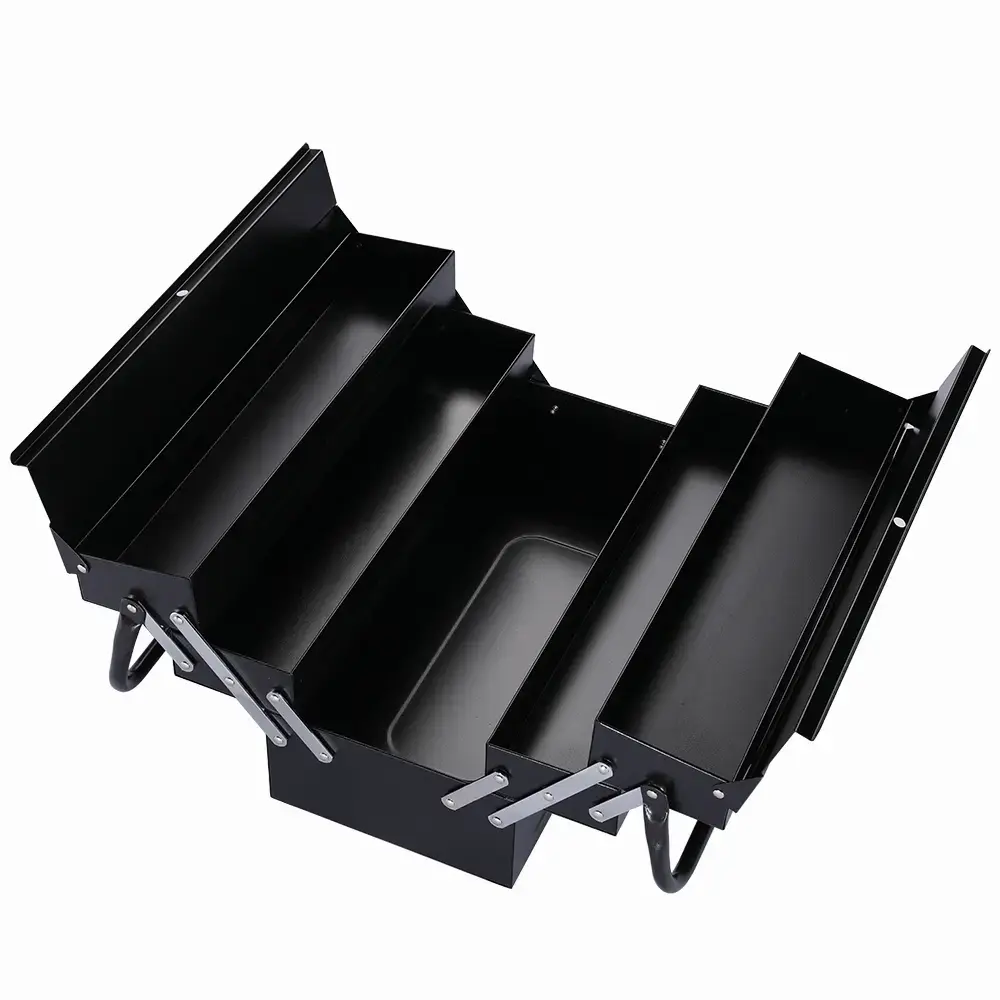How can I ensure the stability of the toolbox in transit?
When transporting toolboxes, it is crucial to ensure their stability, which is not only related to the safety of the goods, but also affects the efficiency and cost of transportation. Here are some practical measures to ensure the stability of the toolbox in transit:
First, optimize the packaging
Choose the right packing material
The use of strong and cushioning packaging materials, such as corrugated boxes, foam board or pearl cotton, can effectively absorb the vibration and shock during transportation. For metal toolboxes, it is recommended to fill the inside with enough cushioning material to prevent the toolbox from moving inside the package.
Ensure the firmness of the packaging
When packing, the toolbox should be firmly fixed in the packaging box to avoid shaking during transportation. Tape, steel or plastic ties can be used to secure the kit, ensuring that it does not shift inside the package.
Moisture-proof treatment
The tool box may encounter damp conditions during transportation, so covering the outside of the package with a moisture-proof material, such as plastic film or waterproof tarpaulin, can effectively protect the tool box from moisture.
Second, reasonable loading
Fixed tool box
The tool box should be securely secured in a transport vehicle, such as a container or truck. The tool kit can be secured to the floor or side walls of the vehicle using straps, Angle steel, or special fixtures. For large toolboxes, it is recommended to use steel tape for multi-point fixation to ensure that it does not slip or tip over during transportation.
Distribution of weight
Place the heavier tool kit at the bottom of the carrier to increase overall stability. At the same time, avoid placing the toolbox on the edge or corner of the vehicle to prevent tipping during sharp turns or bumps.
Avoid mixing with other goods
Try to avoid mixing the toolbox with goods that are easy to roll, easy to slide or have sharp edges to prevent damage caused by collision during transportation.
Third, monitoring and management in the transportation process
Choose a reliable transportation company
Choosing an experienced and reputable transportation company can effectively reduce risks during transportation. Professional transportation companies usually have perfect transportation equipment and strict operating procedures, which can better ensure the safety of the toolbox.
Real-time monitoring of the transportation process
Transport vehicles should be equipped with GPS positioning systems and video surveillance equipment in order to track the transport location in real time and monitor the transport process. This not only ensures the safety of the toolbox, but also allows timely action to be taken when problems arise.
Reasonable planning of transportation routes
Plan transportation routes in advance and try to avoid sections with poor road conditions, traffic congestion or safety hazards. Good road conditions reduce bumps and vibrations during transport, reducing the risk of damage to the toolbox.
Fourth, other precautions
Marking and warning
Clearly mark the attributes of the toolbox on the package (such as "fragile", "moisture-proof", etc.) to remind the transport personnel to take appropriate protective measures.
Periodic inspection
During transportation, periodically check the fastening of the toolbox to ensure that straps or fixtures are not loose. If the problem is found, it should be adjusted or re-fixed in time.
Purchase transportation insurance
Purchase appropriate transportation insurance for the kit to cover unforeseen risks. This not only reduces financial losses, but also provides additional insurance in case something goes wrong.
The above measures can effectively ensure the stability of the toolbox during transportation and reduce the risk of damage or loss during transportation. Hopefully, these suggestions will help you better manage the shipping process of your toolbox.

